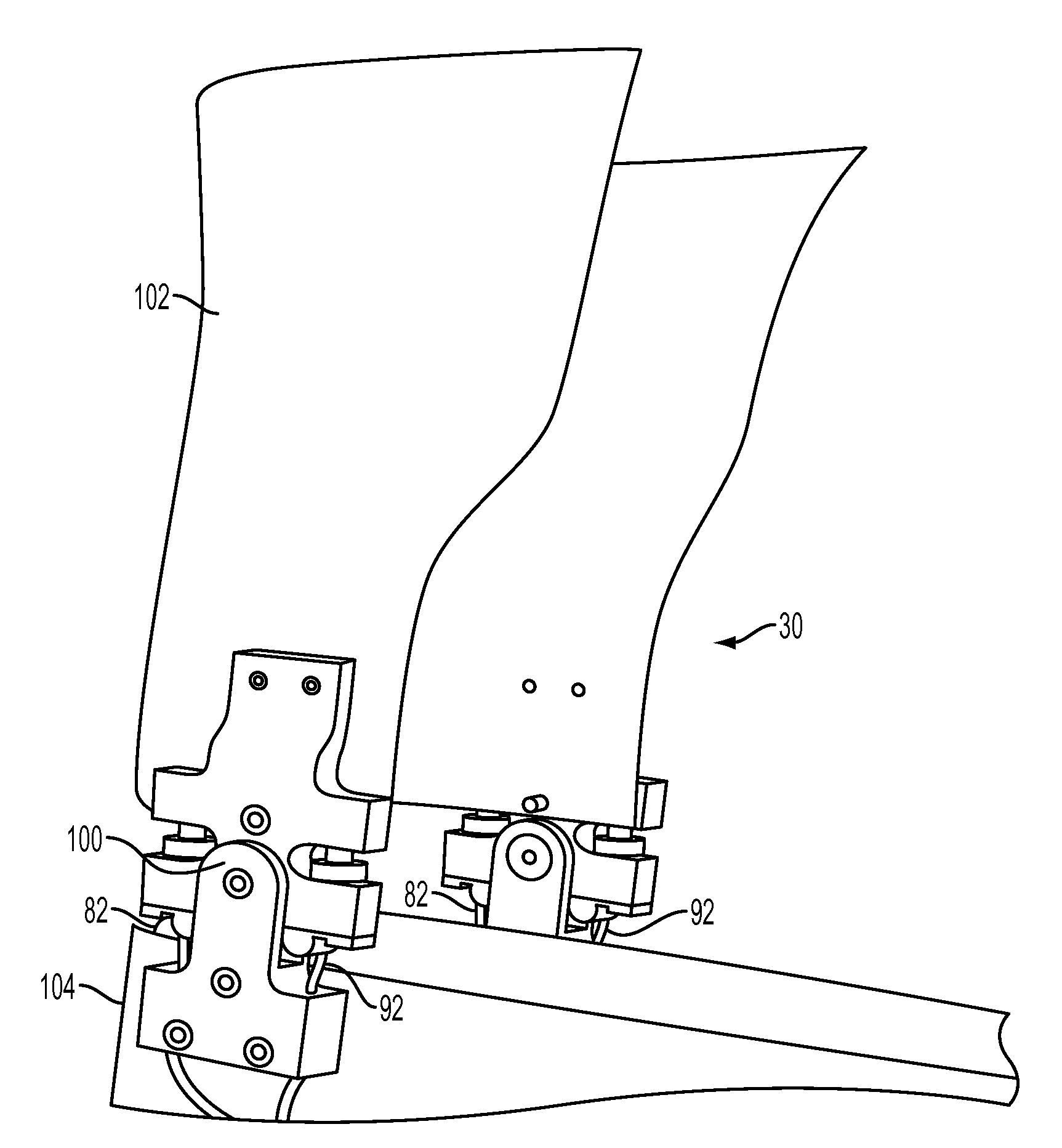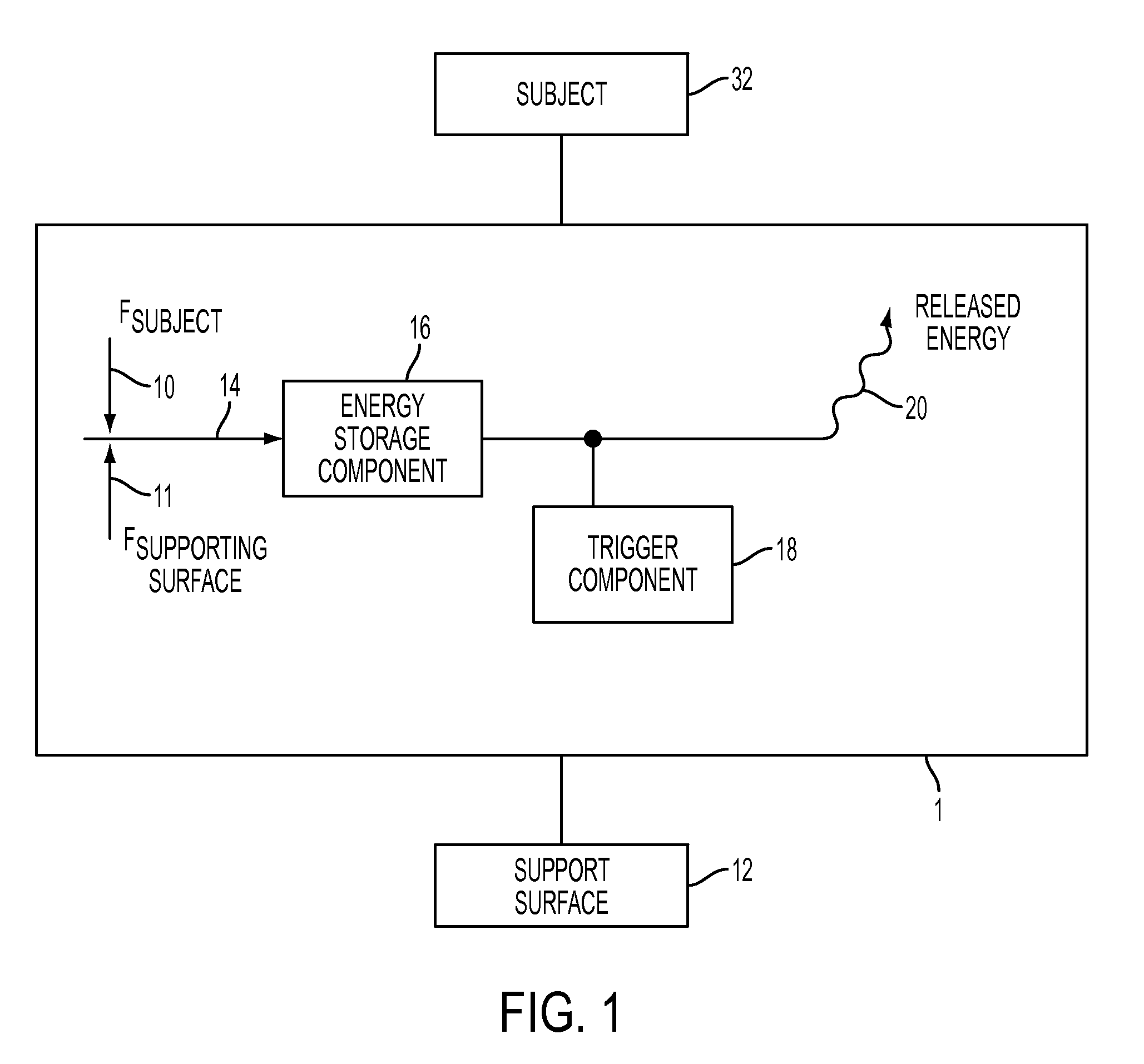Method and System for Energy Returning Ankle Foot Orthosis (ERAFO)
a technology of energy-returning ankle feet and orthotics, applied in the field of orthotics, can solve the problems of not taking advantage of potentially excess mechanical energy, device not delivering energy in a manner, limited utility of this design, etc., to improve walking efficiency, enhance walking performance, and improve the effect of weak power
- Summary
- Abstract
- Description
- Claims
- Application Information
AI Technical Summary
Benefits of technology
Problems solved by technology
Method used
Image
Examples
Embodiment Construction
[0030]The exemplary embodiments described herein relate to orthotic devices and methods, for example and without limitation, to an ankle foot orthosis (AFO). It will be apparent to those of ordinary skill in the art that the devices and processes disclosed herein may be useful for other types of orthotic devices which serve as supports or braces for weak or ineffective joints or muscles, or which assist amputees or non-impaired subjects with one or more movements.
[0031]In order to more clearly and concisely describe the subject matter of the claims, the following definitions are intended to provide guidance as to the meaning of specific terms used in the following written description, examples, and appended claims.
[0032]As used herein, the term “extremity” includes a limb of the body, particularly a human hand or foot; or any body part / location as applied in desired or required operation of the present invention device and method.
[0033]As used herein, the term “locomotion” means the...
PUM
 Login to View More
Login to View More Abstract
Description
Claims
Application Information
 Login to View More
Login to View More - R&D
- Intellectual Property
- Life Sciences
- Materials
- Tech Scout
- Unparalleled Data Quality
- Higher Quality Content
- 60% Fewer Hallucinations
Browse by: Latest US Patents, China's latest patents, Technical Efficacy Thesaurus, Application Domain, Technology Topic, Popular Technical Reports.
© 2025 PatSnap. All rights reserved.Legal|Privacy policy|Modern Slavery Act Transparency Statement|Sitemap|About US| Contact US: help@patsnap.com



